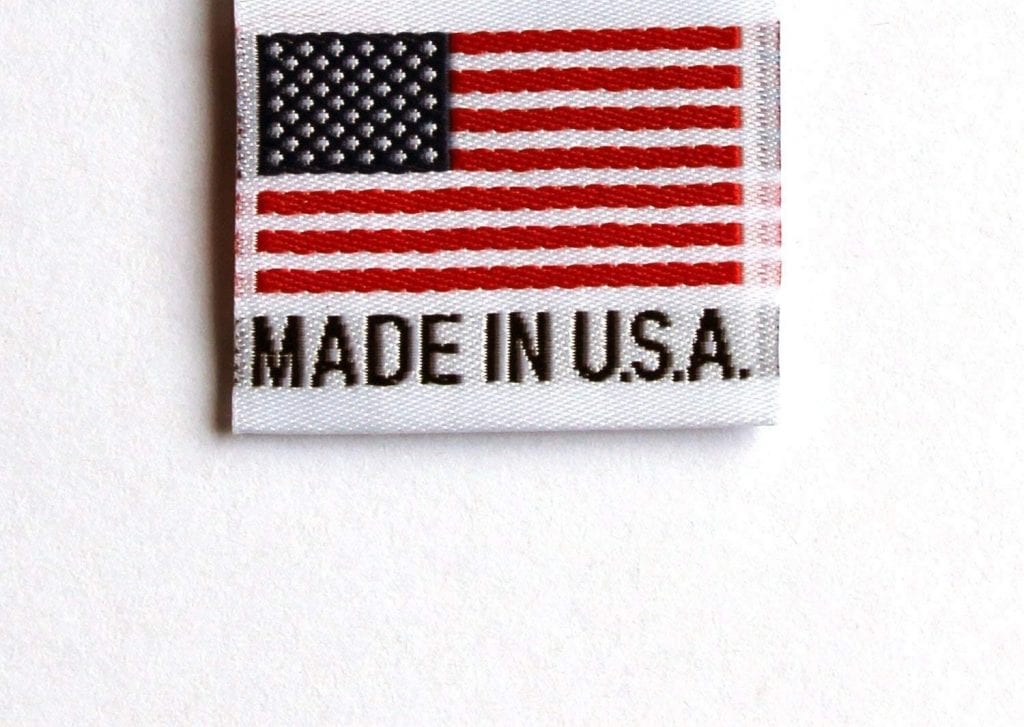In Europe, many of fashion and luxury’s biggest names benefit from little legal loopholes that enable them to use certain “Made in” labels that reflect where the final production process is carried out. As a result, most esteemed brands can use the coveted “Made in France” and/or “Made in Milan” labels – and maintain the allure of domestic workshops and old-school craftsmanship– when the products were largely made outside of their own domestic factories due to the reality of largescale outsourcing, a tactic that sheds light on the importance of a product’s source in the luxury marketing game.
Meanwhile, in the U.S., in much the same way as Italian and French brands are looking to label their products with the country that is their home turf, many American companies want to alert consumers when products have been made in the U.S. by marking them with the “Made in the USA” phrase. However, such labels – while enduringly attractive to brands and consumers, alike – come with strict federal and state laws and standards, and in fact, labeling laws have become a topic of increased attention for manufacturers and regulators, alike.
Almost five years after the U.S.’s labeling rules found themselves in the midst of a fashion industry-adjacent squabble by way of the Federal Trade Commission (“FTC”)’s case against watchmaker Shinola, the government agency has brought the topic to the forefront by issuing a notice of proposed rulemaking to create a new “Made in USA Labeling” rule. The proposed rule, which would apply to product labels and “mail order” advertising, codifies the principles set forth in the FTC’s well-established “Enforcement Policy Statement on U.S. Origin Claims.”
So, what is the significance of taking the FTC’s “Made in USA” standard and turning it into an official rule? The big difference is that, under the new rule, the FTC will now have the ability to seek substantial civil penalties for violation of the rule.
How will the new, proposed rule work? Jeffrey A. Greenbaum, a Managing Partner at Frankfurt Kurnit, explains …
First, the rule applies to claims on product labels, as well as claims on any “mail order catalog” or “mail order promotional material,” which are defined as “any materials, used in the direct sale or direct offering for sale of any product or service, that are disseminated in print or by electronic means, and that solicit the purchase of such product or service by mail, telephone, electronic mail, or some other method without examining the actual product purchased.”
Most significantly, this means that the rule should cover statements made on websites – as well as (potentially) statements made in any advertising that promote the purchase of something online. (Does this mean that if your advertising includes a website address, then you’re covered by the rule?)
Second, the rule applies to any claims that a product is “Made in the United States.” This covers “any unqualified representation, express or implied, that a product or service, or a specified component thereof, is of U.S. origin, including, but not limited to, a representation that such product or service is ‘made,’ ‘manufactured,’ ‘built,’ ‘produced,’ ‘created,’ or ‘crafted’ in the United States or in America, or any other unqualified U.S.-origin claim.”
Third, the rule prohibits any covered “Made in USA” claims “unless the final assembly or processing of the product occurs in the United States, all significant processing that goes into the product occurs in the United States, and all or virtually all ingredients or components of the product are made and sourced in the United States.” In other words, the rule adopts the FTC’s “all or virtually all” standard from the FTC’s Enforcement Policy Statement. (What the rule doesn’t do, which many advertisers were hoping for, was to tell advertisers – at least as a safe harbor – what percentage of non-U.S. content is permitted for unqualified “Made in USA” claims.)
Finally, the rule is not intended to supersede any other federal laws. The rule is also not intended to supersede any state laws, except to the extent that they are inconsistent. The rule also makes clear that state laws that provide greater protection are not to be considered inconsistent.
At this point, the FTC has only issued a notice of proposed rulemaking – and will now be seeking comments on the proposed rule until mid-September.
In announcing the rulemaking, Andrew Smith, the Director of the FTC’s Bureau of Consumer Protection, said, “Whether a product is actually ‘Made in the USA’ is an important issue for consumers, manufacturers, retailers, and American workers. We welcome comments from all stakeholders to inform our rulemaking effort.”
The Commission’s vote to issue the notice of proposed rulemaking was 4-1, with Commissioner Noah Joshua Phillips voting no. In a dissenting statement, Commissioner Phillips argued that the FTC was exceeding its authority in issuing a proposed rule that covered catalogs and online sales (since the law that the rule is implementing only applies to “labels”). Commissioner Christine S. Wilson also dissented in part, agreeing that the rule should only apply to labels.
Jeffrey A. Greenbaum is a Managing Partner of Frankfurt Kurnit, and one of the country’s leading advertising lawyers. (Intro courtesy of TFL)











